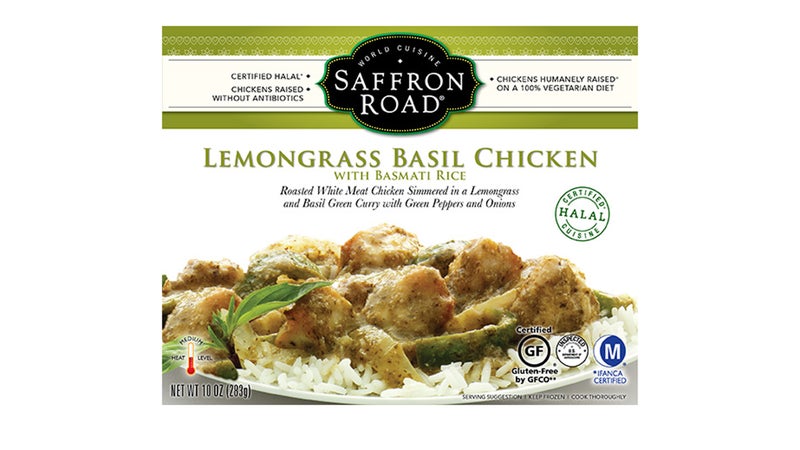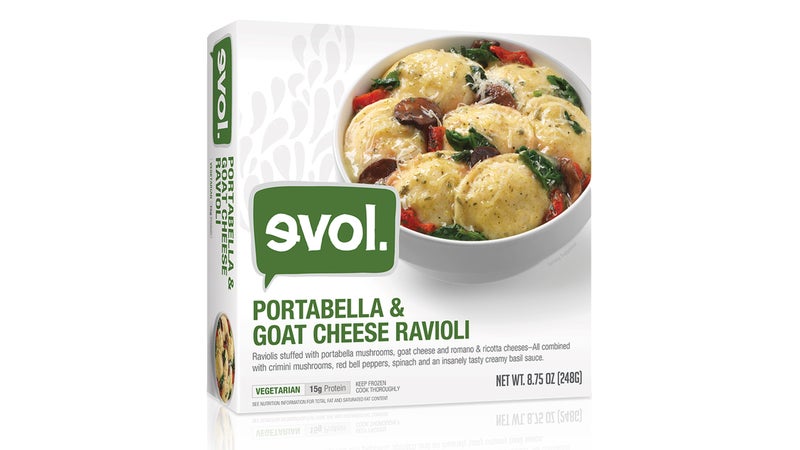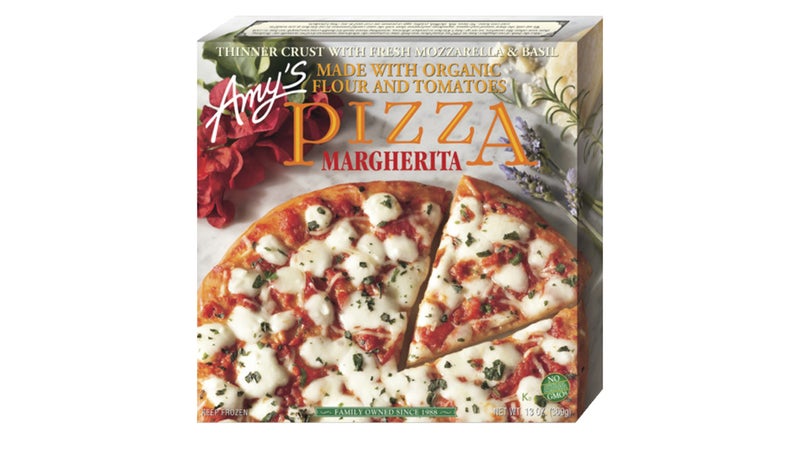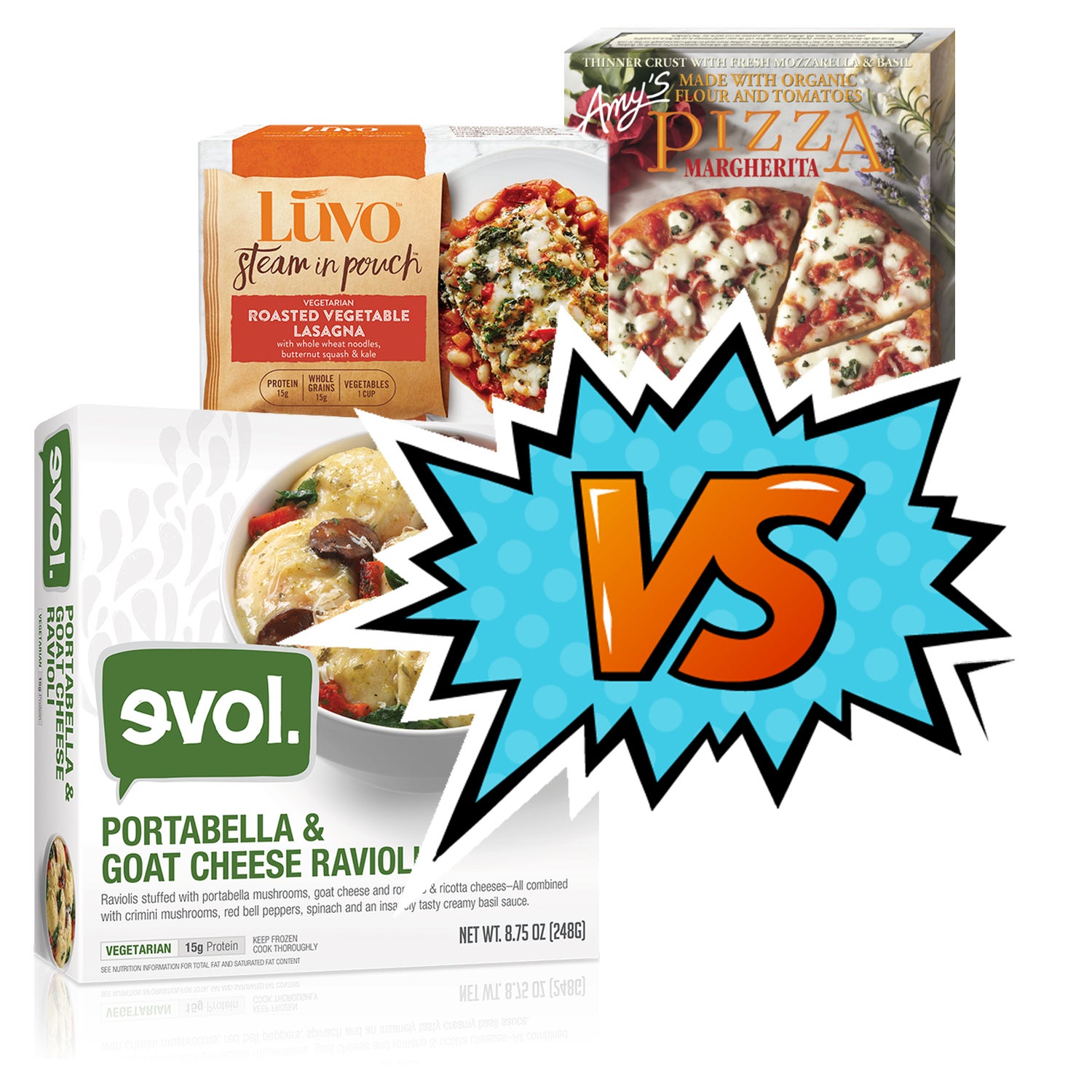Eating well is pretty damn tough. If you don’t know how to cook, can’t stand the phrase “meal prep,” or just feel like there’s no way in hell you’ll be able to cook at the end of a workday or after a tough workout, getting something nutritious for dinner becomes even more challenging. Your options: Head to a healthyish restaurant, or kick it with a frozen meal.
If you think all frozen dinners are nothing more than textureless mush bathed in sodium and fake ingredients, you’re (sometimes) wrong. As more of us have begun to prioritize our health without wanting to give up the rest of our lives, companies have responded in kind, targeting the frozen-food market as part of a strategy to blend convenience and nutrition.
To determine which of these frozen feasts are best for everyone from the wannabe healthy eater to the time-strapped high performer, I decided to search for the most nutritious and delicious microwaveable meals. I tested meals from five brands—all of which cater to a health-conscious, performance-minded consumer—and evaluated them on five metrics: food appearance, packaging, taste, nutrition, and cost. Taste, nutrition, and cost were scored on a scale of one to ten; packaging and appearance were allotted a maximum of five points. I tallied the metrics to reach the final score, with a possible max of 40. The results are listed below, from lowest to highest score.
Luvo

Luvo’s slogan—“Three, Two, None!”—is code for the right balance of protein, whole grain, vegetables, minimal sodium or added sugar, and no artificial anything. Despite the catchy marketing, affordable pricing ($6 per box), and use of the World Health Organization and the Harvard School of Public Health to inform the recipes, the Luvo meals I sampled were nearly unbearable.
I started with the Thai-Style Green Curry Chicken, full of rubbery chicken and soggy brown rice noodles. The Vegan Hawaiian Un-Fried Rice “Power Bowl” I tried next contained pineapple that actually tasted like pineapple and cashews that tasted like cashews, so that was a plus. But the Roasted Vegetable Lasagna flopped out of the plastic steam pouch and onto my plate like a dead fish and reminded me of spicy water. All had admirable stats for fiber, vitamin A, and vitamin C, but their stunningly low calorie counts made a lot more sense when I realized I was still pretty hungry after eating them. I had to supplement each with a yogurt, which brought the price for dinner up to $7.50 and defeated the whole point of buying a boxed meal. That, in conjunction with the dubious eco-friendliness of the pouch, makes for a less than sustainable dinner.
- Food Appearance: 2/5
- Packaging: 4/5
- Taste: 2/10
- Nutrition: 6/10
- Cost: 4/10
Final Score: 18
Saffron Road

Saffron Road is available almost everywhere, but you may not have noticed it thanks to its severely nondescript, yet still recyclable packaging.
At $6.50, the Thai Red Curry Fish with Rice Noodles plate was on the pricier side. The box told me I would “love the combination,” and much to my surprise, I dug the meal and never once thought about how I was eating frozen fish. The Sesame Ginger Salmon with White Rice was tasty, too, and included water chestnuts that were still crunchy after being frozen for who knows how long. I also tried a perfectly acceptable basil chicken dish, unexceptional in every way but low in fat and sodium and meriting no complaints.
When it comes to the taste and nutrient value of the food inside the box, my take on Saffron Road is that it’s doing everything right. I would just love it if they could knock the price down a buck or two.
- Food Appearance: 3/5
- Packaging: 4/5
- Taste: 6/10
- Nutrition: 7/10
- Cost: 6/10
Final Score: 25
Evol

As an option you can buy at Target, Evol appealed to me from the start.
Evol’s mission statement—“Bring down the broken food system. One bite at a time”—points to the brand’s basic philosophy: All the meat is antibiotic-free, the eggs are cage-free, and there are no artificial ingredients or preservatives. As its website points out, freezing food is a perfectly healthy preservation tactic, not something to be equated with fake foods and meals void of nutrition. Plus, all the packaging is made entirely of recyclable paper.
I tried Evol’s Portabella and Goat Cheese Ravioli, Chicken Enchiladas, and Ginger Soy Udon Noodles, each of which cost $3.50. The food was solid but nothing special. For the price, you could do a lot worse, especially when the “insanely tasty sweet soy ginger sauce” on the noodles actually tasted as billed. The food felt real—noodles that resembled hearty Chinese takeout, not flimsy tasteless strips, and mushroom ravioli that felt like the room service meal you’d enjoy but wish you hadn’t paid $18 for. But beware: Mission statement aside, a large part of why these meals tasted so palatable is the sky-high salt and fat content. The ravioli was chock-full in vitamin A, sure, but contained 26 percent of my daily sodium, and the chicken enchiladas contained 30 percent of my daily saturated fat.
- Food Appearance: 4/5
- Packaging: 5/5
- Taste: 7/10
- Nutrition: 5/10
- Cost: 10/10
Final Score: 31
Amy’s Kitchen

Amy’s is widely available, ubiquitous in stores large and small, organic and not. While I was already familiar with Amy’s personal pesto pizzas, the brand has a number of gluten-free options, like the margherita pizza I sampled, which was surprisingly delicious.
Started in the 1980s in what could best be characterized as a limited healthy food environment, Amy’s responded by creating boxed meals with mainly organic ingredients and a balanced nutritional profile. Today, the brand remains one of the best in the business and can get away with charging a little more because you know you’re getting a meal that tastes good without derailing your attempts at healthy eating. They also advocate for sustainability in their food production, establish strong relationships with the farmers who source their ingredients, and are working to innovate their packaging so all materials will eventually be fully compostable.
I would order the $6.30 Brown Rice, Vegetables, and Tofu Bowl in a restaurant. It was that good, even if the occasionally oatmeal-like texture made chewing feel unnecessary. Amy’s Indian Vegetable Korma, which is vegan and gluten-free, was the most exciting of the bunch. The plate somehow managed to make a semi-spicy Indian dish feel like comfort food. Plus, the vegetables and curry sauce were in a separate section from the rice and the dal, which meant I got to mix them myself and avoid soggy grains.
The cauliflower and peas were immediately identifiable as such, both by sight and taste—not true of every frozen meal I tried. I believe that’s something you deserve in your dinners, even if you’re too lazy to make them yourself.
- Food Appearance: 5/5
- Packaging: 3.5/5
- Taste: 9/10
- Nutrition: 8/10
- Cost: 8/10
Final Score: 33.5
Kashi

According to the company’s website, Kashi was founded with a reverence for whole grains and a goal to “nourish people and planet with plant-powered passion.” Kashi’s frozen entrees are all vegan, relatively cheap (clocking in at $5 a pop), and environmentally conscious (they come in reusable plastic bowls).
My first and second Kashi dinners, the Amaranth Polenta Plantain Bowl and the Sweet Potato Quinoa Bowl, distinguished themselves from the majority of microwavable meals with their complex layers of flavor and vegetables that looked like the real thing. Each bowl’s ingredients had distinct textures, and the meals were substantive, filling, and relatively low in all the things you would want a healthy dinner to be low in.
Despite my excitement, I couldn’t find my third and final meal in the grocery store when I went to buy it for my last test. Kashi’s online store locator tool offers mixed reliability, which is how I ended up traveling to five different New York City shops in search of a Black Bean Mango Bowl, ultimately spending more on MetroCard fare than the boxed dinner I eventually secured. While I hesitate to call that one worth it, it was one of the best meals I had eaten in weeks.
- Food Appearance: 5/5
- Packaging: 4/5
- Taste: 9/10
- Nutrition: 10/10
- Cost: 9/10

